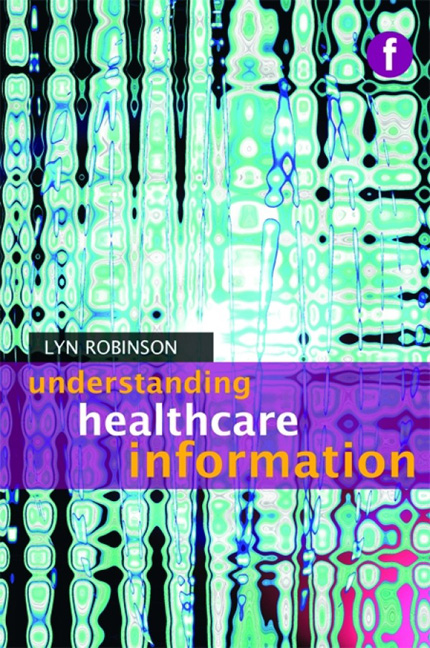Book contents
- Frontmatter
- Contents
- Acronyms and abbreviations
- Introduction
- 1 The healthcare information domain
- 2 History of healthcare and its information environment
- 3 Producers and users of healthcare information
- 4 Healthcare information organization
- 5 Healthcare information sources, services and retrieval
- 6 Healthcare Information and knowledge management
- Afterword
- Index
4 - Healthcare information organization
Published online by Cambridge University Press: 09 June 2018
- Frontmatter
- Contents
- Acronyms and abbreviations
- Introduction
- 1 The healthcare information domain
- 2 History of healthcare and its information environment
- 3 Producers and users of healthcare information
- 4 Healthcare information organization
- 5 Healthcare information sources, services and retrieval
- 6 Healthcare Information and knowledge management
- Afterword
- Index
Summary
Introduction
The characteristics of information and knowledge in the healthcare domain, and the variety of users and uses involved, mean that the subject area, by its very nature, requires a series of detailed and specific technical terminologies, and a variety of classifications and nomenclatures. All are based on the underlying hierarchical structure of healthcare knowledge, at least in its predominant scientific aspects. The result is that healthcare information is organized by a variety of alternative, and generally overlapping, controlled vocabularies. ‘Controlled’ implies, in a sense, artificial vocabularies, designed to avoid the redundancy and inconsistency of natural spoken and written language. These information organization tools are the subject of this chapter. They are too many to deal with each in detail, and instead we will consider a number of examples, each illustrating some general principles. They are divided into two main categories: first classifications and taxonomies, then subject headings and thesauri. The first group are arranged hierarchically, showing the semantic structure of the area and bringing together concepts that are similar in meaning. The second are arranged alphabetically.
There are many good treatments of the principles of knowledge organization, and we will not repeat this material here. For overviews of these topics, see Chowdhury and Chowdhury (2007), Taylor (2004), Hjørland (2003) and Svenonious (2000).
The chapter looks first at some general issues in the organization of healthcare information specifically. It then examines in more detail four forms of controlled vocabularies of importance for healthcare information: dictionaries and glossaries; classifications and taxonomies; subject headings and thesauri; and meta-vocabularies. Finally, it looks at abstracting and indexing in the context of healthcare.
Organizing healthcare information: overview
The healthcare information domain has generated a rich variety of classifications and vocabularies (for overviews, and some of the issues involved, see Cimino, 1998 and Taylor, 2006. It is also one of the oldest fields of recorded knowledge, and one with a consistent sense of innovation. Tools for organizing its knowledge base have a long history, with the earliest classifications dating back to classical times, as was noted in Chapter 2. Statistical classifications, in a modern sense, began in the 18th century and medical abstracting and indexing services, with their associated vocabularies, in the mid-19th century.
- Type
- Chapter
- Information
- Understanding Healthcare Information , pp. 95 - 132Publisher: FacetPrint publication year: 2010



